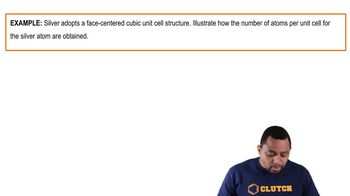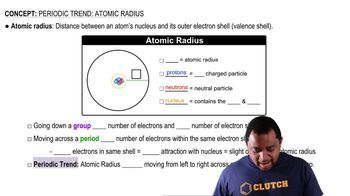Here are the essential concepts you must grasp in order to answer the question correctly.
Face-Centered Cubic (FCC) Structure
In a face-centered cubic (FCC) structure, atoms are located at each corner of the cube and at the center of each face. This arrangement allows for a high packing efficiency, with each unit cell containing four atoms. Understanding this structure is crucial for calculating properties like atomic radius and density, as it defines how atoms are arranged in the crystal lattice.
Recommended video:
Face Centered Cubic Example
Atomic Radius Calculation
The atomic radius in an FCC lattice can be determined using the relationship between the edge length of the unit cell and the atomic radius. Specifically, the atomic radius (r) is related to the edge length (a) by the formula: a = 2√2r. This relationship arises because the face diagonal of the cube contains four atomic radii, allowing for the calculation of the radius from the known edge length.
Recommended video:
Density Calculation
Density is defined as mass per unit volume and can be calculated for a crystalline solid using the formula: density = (mass of atoms in unit cell) / (volume of unit cell). For FCC structures, the mass can be determined by multiplying the number of atoms per unit cell by the molar mass and dividing by Avogadro's number. The volume is simply the cube of the edge length, making it essential to understand both mass and volume for density calculations.
Recommended video:
 Verified step by step guidance
Verified step by step guidance


